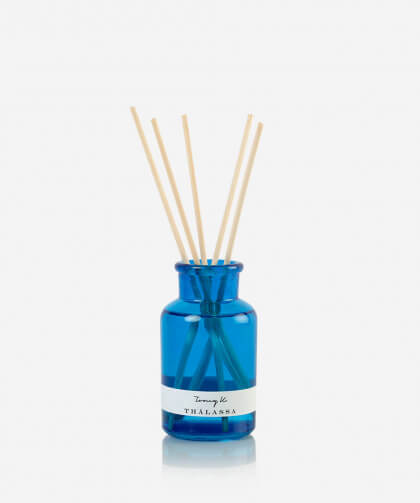Margianna is always on the go between Nafplio, Athens and London but she feels that Nafplio intrigues her the most. The town is surrounded by the sea, but its long history remains an inspiration. Nafplio, a seaport town in the Peloponnese, was the capital of the First Hellenic Republic and of the Kingdom of Greece, from the start of the Greek Revolution in 1821 until 1834. Under Venetian domination, the town was known in Italian as Napoli di Romania, to distinguish it from Napoli (Naples) in Italy. Palamidi, the Venetian fortress which inspired MarGianna’s journey, is emblematic of the city. Six of the eight bastions of the fortress are named after ancient Greek leaders and war heroes.
MagnaDi
MagnaDi silk scarves are exclusively crafted in Soufli and its collections combine fashion with home decoration
Discovery
MagnaDi scarves are hand drawn and then digitally printed on silk. Young designer Margianna Dragoumanou is inspired by Ancient Greek tradition and mythology and all the prints’ colours are “stolen” from Greek nature. They were enthusiastically introduced to the site by Elena Amvrosiadou, a successful fund manager and a valued friend.
MagnaDi offers a collection inspired by the Aegean Sea with characteristic deep blue geometric patterns and two illustratively more varied collections, titled Ancient Greece and Mythology and a brightly coloured range of scarves entitled Greek Key whose form represents infinity and flow. All are in luscious shades and the weight of the silk gives them an elegant fluidity. There are stylish pocket squares for men and the Tiles Collection which can be used as hair bands depict decorative wall tiles, as well as the plaster stencilling found in the village of Pyrgi in Chios.
MagnaDi offers a collection inspired by the Aegean Sea with characteristic deep blue geometric patterns and two illustratively more varied collections titled Ancient Greece and Mythology and a brightly coloured range of scarves entitled Greek Key whose form represents infinity and flow

The word “magnaDi” means delicately woven and is related to the myth of Greek sea goddess Leukothea whose lightly woven veil is always described in exquisite detail in ancient Greek stories. According to myth, Leukothea aided sailors in distress and guided them into safe waters. In Homer’s Odyssey, when Odysseus found himself shipwrecked in the storm that Poseidon created to avenge him, Leukothea rose above the waves and gave him her veil. Swathing the veil around him, Odysseus kept himself alive through the storm until he swam to the land of the Faiakes, thought to be present-day Corfu.
MagnaDi scarves are exclusively crafted for the brand in Soufli, a town in northern Greece famous for its silk industry that flourished there in the 19th century. The collection combines fashion with home decoration as the scarves can be used as dresses or art objects which can be framed as paintings and placed on the wall.

According to myth, Leukothea aided sailors in distress and guided them into safe waters. In Homer’s Odyssey, when Odysseus found himself shipwrecked in the storm that Poseidon created to avenge him, Leukothea rose above the waves and gave him her veil

Memory
When Margianna was a little girl growing up in the city of Nafplio, her mother used to wake her up early in the morning in order to visit the Venetian fortress of Palamidi. On the famously long climb of 999 steps to the top of the fortress, her mother told her old stories about the city and its history. That habit explains why the young designer has her heart set on a constant exploration of Greek history and mythology. Margianna’s mother was also a silk designer and she has vivid childhood memories of her drawing scarves on silk.
After completing her bachelor’s degree in Business Administration at the University of Patras, Margianna continued her studies and work in the UK. Working in London as an interior designer she discovered the enduring popularity of Ancient Greek themes and patterns. It was around this time that she started drawing her own scarves inspired by Ancient Greek myths and traditions but with a modern twist. In 2016 she decided to take the next step and establish the MagnaDi brand.
When Margianna was a little girl growing up in the city of Nafplio her mother used to wake her up early in the morning in order to visit the Venetian fortress of Palamidi

Narration






